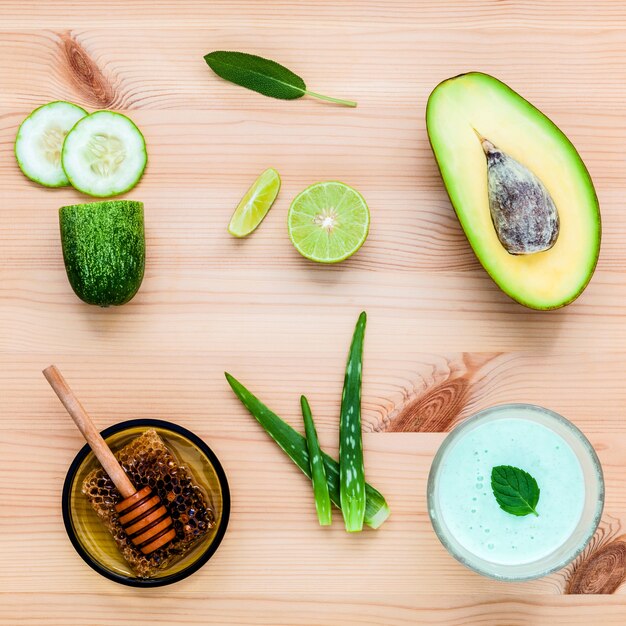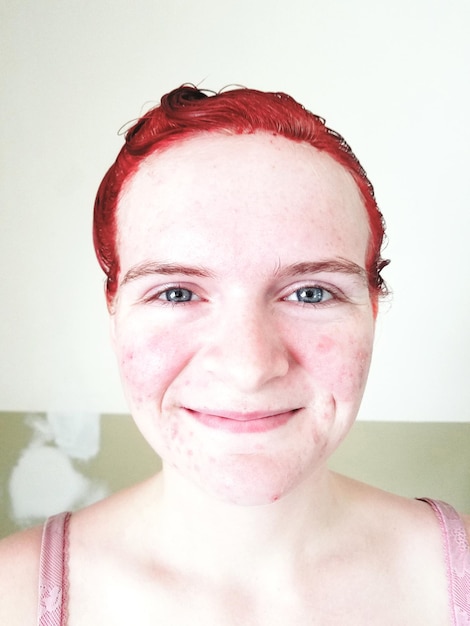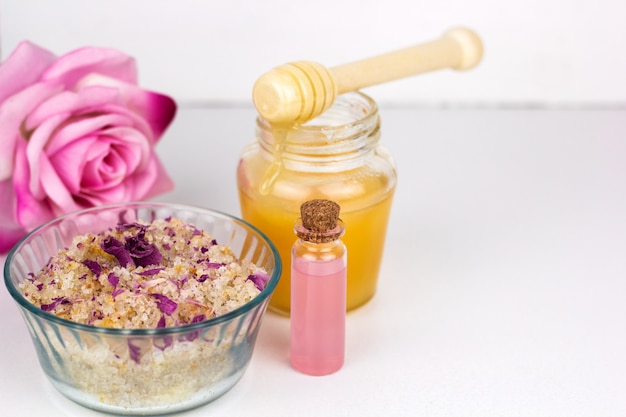DIY Beauty: Homemade Skincare Safety, Effectiveness & Expert Advice

The ‘DIY Beauty’ Trend: Are Homemade Skincare Recipes Safe and Effective? A Dermatologist’s Perspective’ delves into the risks and benefits of creating your own skincare products, offering expert advice on ingredient selection, formulation techniques, and potential dangers to avoid for safe and effective results.
The ‘DIY beauty’ trend has exploded, promising natural, customized skincare solutions. But is the hype justified? Let’s explore The ‘DIY Beauty’ Trend: Are Homemade Skincare Recipes Safe and Effective? A Dermatologist’s Perspective’.
Understanding the Allure of DIY Beauty
DIY beauty appeals to many seeking personalized, affordable, and natural skincare options. But, where does this trend come from and what are the main motivators guiding its popularity?
The Rise of Natural and Organic
Consumers are increasingly seeking natural and organic products, driving the DIY beauty movement. They’re concerned about the chemicals in commercial products and are looking for alternatives.
Customization and Control
DIY allows for customization, tailoring recipes to specific skin needs. People want to control the ingredients and avoid potential allergens or irritants found in store-bought products.
- Cost-Effectiveness: Homemade skincare can often be cheaper than purchasing high-end products.
- Transparency: Knowing exactly what’s going on your skin provides peace of mind.
- Sustainability: Reducing reliance on commercial products can be more environmentally friendly.
Ultimately, the DIY beauty trend reflects a desire for greater control, transparency, and personalization in skincare. However, it’s crucial to approach it with careful consideration and a solid understanding of skincare principles.
The Potential Dangers of Homemade Skincare
While appealing, homemade skincare isn’t without risks. Formulating skincare requires knowledge of chemistry, preservation, and potential interactions between ingredients.

Lack of Preservation
Homemade products often lack proper preservation, making them susceptible to bacterial or fungal contamination. This can lead to skin infections and irritation.
Incorrect pH Levels
Maintaining the right pH balance is crucial for skincare. Incorrect pH can disrupt the skin’s natural barrier, leading to dryness, irritation, or even acne.
- Irritation and Allergies: Certain ingredients, while natural, can be potent irritants or allergens.
- Inconsistent Formulation: Without proper measuring and mixing techniques, results can be unpredictable.
- Sun Sensitivity: Some ingredients can increase the skin’s sensitivity to the sun, leading to sunburn.
Therefore, informed decisions are important. Proper research is essential to mitigate these risks when diving into DIY beauty.
Dermatologist-Approved DIY Ingredients
Not all DIY ingredients are created equal. Some have proven benefits and a relatively low risk of irritation when used correctly. Let’s explore some dermatologist-approved options.
Honey
Raw honey is a natural humectant, meaning it draws moisture to the skin. It also has antibacterial and anti-inflammatory properties, making it beneficial for acne-prone skin.
Oatmeal
Colloidal oatmeal is known for its soothing and anti-inflammatory properties. It can help relieve itching and irritation associated with eczema and dry skin.
Aloe Vera
Aloe vera gel is a popular ingredient for soothing sunburns and hydrating the skin. It has anti-inflammatory properties and can promote wound healing.

- Avocado: Rich in vitamins and healthy fats, avocado can nourish and moisturize dry skin.
- Yogurt: Plain yogurt contains lactic acid, a gentle exfoliant that can brighten the skin.
- Green Tea: Green tea’s antioxidants can help protect the skin from damage.
By focusing on safe and well-researched ingredients, you can minimize the risks associated with DIY skincare. Using dermatologist-approved ingredients can help ensure the safety and efficacy of your homemade concoctions.
Ingredients to Avoid in DIY Recipes
Just as there are beneficial ingredients, others should be avoided entirely in homemade skincare. These ingredients pose significant risks of irritation, allergic reactions, or even long-term damage.
Lemon Juice
Despite being a popular ingredient in DIY recipes, lemon juice is highly acidic and can disrupt the skin’s pH balance, leading to irritation, hyperpigmentation, and increased sun sensitivity.
Baking Soda
Baking soda has a very high pH, which can damage the skin’s protective barrier, causing dryness, irritation, and sensitivity. Its abrasive nature can also lead to micro-tears in the skin.
Essential Oils (Undiluted)
Essential oils are highly concentrated and can cause allergic reactions, burns, and photosensitivity if used undiluted. Even when diluted, some essential oils are too potent for facial skincare.
When delving into DIY recipes, it’s vital to be aware of the ingredients that can do more harm than good. By carefully avoiding certain ingredients, you can ensure a safer and more effective approach to homemade skincare.
Consulting a Dermatologist Before DIY
Before diving into DIY skincare, consulting a dermatologist is a wise choice. A dermatologist can assess your skin type, identify potential sensitivities, and provide personalized recommendations.
Personalized Advice
Dermatologists can offer tailored advice based on your specific skin concerns, whether it’s acne, eczema, aging, or hyperpigmentation. They will help guide you towards products and routines that are most suitable.
Identifying Allergies and Sensitivities
A dermatologist can help you identify potential allergies or sensitivities through patch testing. This information can guide your ingredient choices and prevent adverse reactions.
By seeking expert guidance, you can navigate the DIY beauty landscape with greater confidence and minimize the risk of harm. Remember, everyone’s skin is unique, and what works for one person may not work for another.
Safe Practices for DIY Skincare
If you choose to pursue DIY skincare, following safe practices is essential to minimize risks and maximize potential benefits. These practices encompass hygiene, ingredient sourcing, formulation techniques, and storage.
Start with Research
Thoroughly research each ingredient before incorporating it into your recipes. Understand its properties, potential benefits, and potential risks.
Use Clean Equipment
Always use clean equipment, including mixing bowls, utensils, and containers. Sterilize equipment with alcohol before use to minimize the risk of contamination.
Patch Test
Always perform a patch test before applying a new homemade skincare product to your entire face. Apply a small amount to a discreet area, such as the inside of your wrist, and wait 24-48 hours to see if any irritation occurs.
- Measure Accurately: Use precise measurements when formulating your recipes to ensure consistent results.
- Store Properly: Store your homemade skincare products in airtight containers in a cool, dark place to extend the shelf life.
- Be Realistic: Understand that DIY skincare may not deliver the same results as professional treatments or formulations.
By following these safe practices, you can minimize the risks associated with DIY skincare and create products that are both effective and gentle on your skin. Remember, safety should always be your top priority.
| Key Point | Brief Description |
|---|---|
| 🌿 Natural Appeal | DIY offers control over ingredients, avoiding harsh chemicals. |
| ⚠️ Potential Risks | Improper preservation and pH balance can harm the skin. |
| ✅ Safe Ingredients | Honey, oatmeal, and aloe vera are dermatologist-approved. |
| 🧪 Consult a Pro | Get personalized advice from a dermatologist for safe DIY. |
Frequently Asked Questions (FAQs)
▼
DIY skincare can be more natural if you choose to use only natural and organic ingredients. However, it’s essential to research the ingredients carefully to ensure they are safe and effective for your skin type.
▼
Proper preservation is crucial. Consider using natural preservatives like vitamin E oil or grapefruit seed extract. Store products in a cool, dark place and avoid cross-contamination by using clean equipment.
▼
Common mistakes include using overly harsh ingredients (like lemon juice or baking soda), not preserving products properly, and failing to patch test. Always start with well-researched recipes and gentle ingredients.
▼
While DIY skincare can be a great addition to your routine, it may not replace professional treatments. Dermatologists offer advanced treatments and formulations that address specific skin concerns more effectively.
▼
Pregnant women should consult with their doctor or a dermatologist before using any DIY skincare recipes. Some ingredients, like certain essential oils, may not be safe during pregnancy.
Conclusion
The DIY beauty trend offers a unique way to tailor skincare to individual needs, but it requires a cautious approach. Understanding ingredient properties, following safe practices, and consulting with a dermatologist can help you harness the benefits while minimizing potential risks.